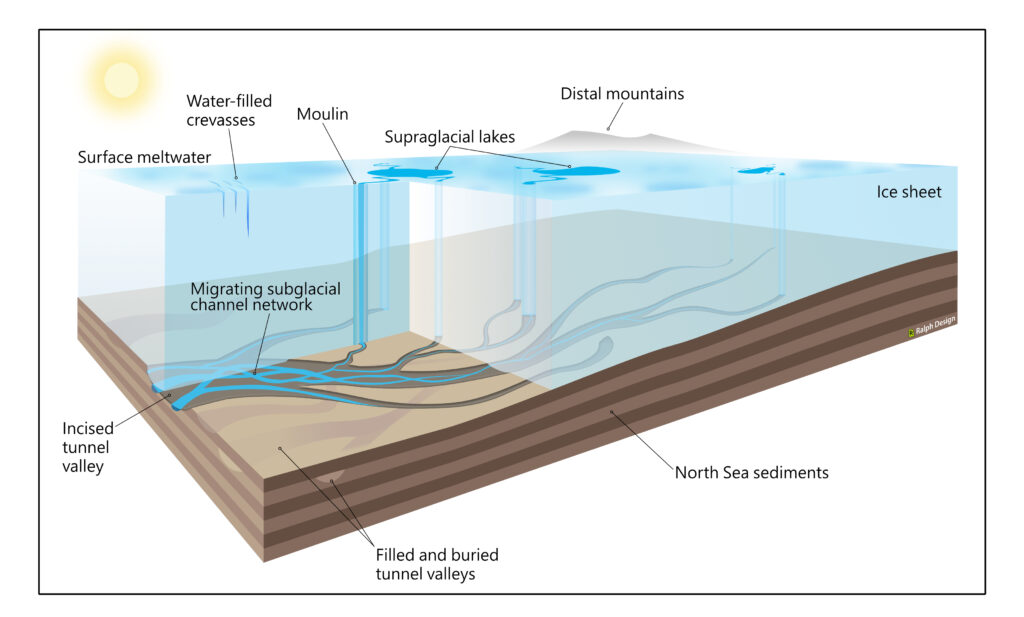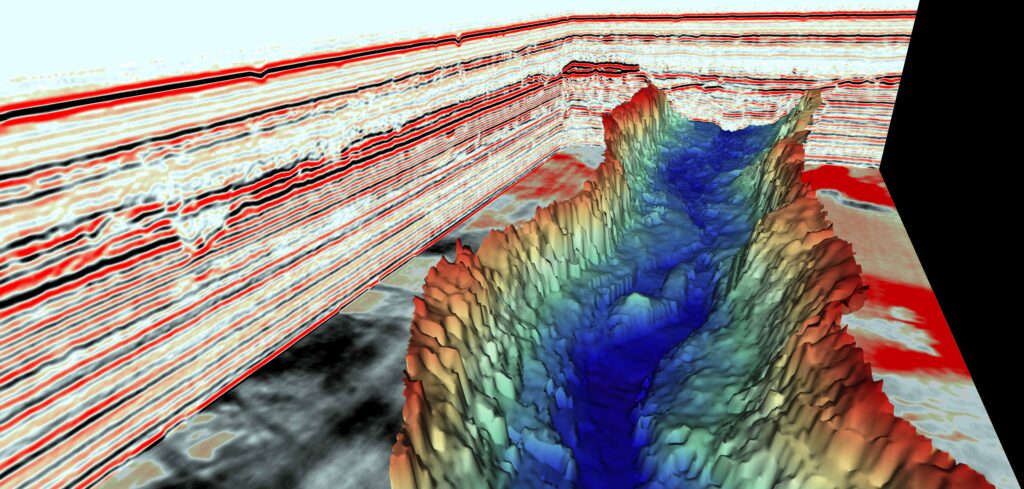Deep valleys buried under the seafloor of the North Sea have recorded how the ancient ice sheets covering the UK and Europe expelled water to stop themselves from collapsing.
A new study from British Antarctic Survey (BAS) discovered that the valleys took just hundreds of years to form as they transported vast amounts of meltwater away from under the ice and out into the sea.
This new understanding of when the vast ice sheets melted 20,000 years ago has implications for how glaciers may respond to climate warming today.
Tunnel valleys are enormous channels, sometimes up to 150km long, 6km wide and 500m deep, that drain water from beneath melting ice sheets. There are thousands buried beneath the seafloor of the North Sea that record the melting of ice sheets that have covered the UK and Western Europe over the last two million years.
Lead author James Kirkham, from British Antarctic Survey (BAS) and the University of Cambridge, said, “This is an exciting discovery. We know that these spectacular valleys are carved out during the death throes of ice sheets. By using a combination of state-of-the-art subsurface imaging techniques and a computer model, we have learned that tunnel valleys can be eroded rapidly beneath ice sheets experiencing extreme warmth.”
The team analyzed detailed seismic images that provide a 3D scan of the Earth’s buried layers. Informed by clues discovered within the valleys, the authors performed a series of computer modeling experiments to simulate valley development and test how quickly they formed as the last ice sheet to cover the UK melted away at the end of the most recent ice age, around 20,000 years ago.
The research suggests that this process is quick by geological timescales, with the melting ice forming giant tunnel valleys within hundreds of years, expelling water that could otherwise accelerate rates of ice loss.
Traditionally, the drainage of water from beneath ice sheets is thought to stabilize ice flow, a process that could potentially buffer modern ice sheets from collapse in a warming climate. However, while inspecting the detailed seismic scans, the authors began to find tell-tale signatures of both stagnant and rapid ice movement within the valleys, complicating the picture of how these rapidly forming channels might affect future ice sheet behavior.
According to the study, these valleys, buried hundreds of meters beneath the mud of the North Sea seafloor, have recorded a mechanism for how ice sheets respond to extreme warmth that is missing from present-day ice sheet models. Such models do not currently resolve fine-scale water drainage processes, despite them appearing to be an important control on future ice loss rates and ultimately sea level rise.
Kirkham said, “The pace at which these giant channels can form means that they are an important, yet currently ignored, mechanism that may potentially help to stabilize ice sheets in a warming world. As climate change continues to drive the retreat of the modern-day Greenland and Antarctic ice sheets at ever-increasing rates, our results call for renewed investigation of how tunnel valleys may help to stabilize contemporary ice losses, and therefore sea level rise, if they switch on beneath the Earth’s ice sheets in the future.”
Dr Kelly Hogan, co-author and a geophysicist at BAS, said, “We have been observing these huge meltwater channels from areas covered by ice sheets in the past for more than a century but we did not really understand how they formed. Our results show, for the first time, that the most important mechanism is probably summer melting at the ice surface that makes its way to the bed through cracks or chimney-like conduits and then flows under the pressure of the ice sheet to cut the channels. Surface melting is already hugely important for the Greenland Ice Sheet today, and this process of water transport through the system will only increase as our climate warms. The crucial question now is will this ‘extra’ meltwater flow in channels cause our ice sheets to flow more quickly or more slowly into the sea.”
To view the complete study published in the journal Quaternary Science Reviews, click here.




